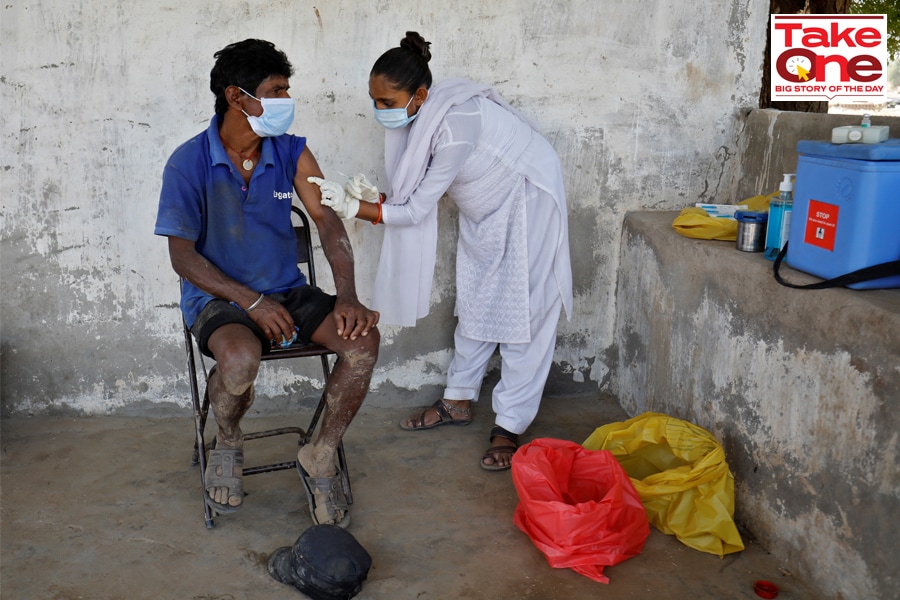
Can India's vaccine fast-track programme help fight the deadly second Covid wave?
As the government allows emergency use clearance for foreign vaccines to give the pace of inoculation a big push, Forbes India explores what difference it will make to the existing supply capacities
 A brick kiln worker receives a dose of COVISHIELD, a coronavirus disease (COVID-19) vaccine manufactured by Serum Institute of India, at Kavitha village on the outskirts of Ahmedabad, India, April 8, 2021.
A brick kiln worker receives a dose of COVISHIELD, a coronavirus disease (COVID-19) vaccine manufactured by Serum Institute of India, at Kavitha village on the outskirts of Ahmedabad, India, April 8, 2021.
Image: Amit Dave / REUTERS
Amid concerns of an uncontrollable surge in Covid-19 cases, and a severe shortage of vaccines, India has finally decided to fast-track approvals for vaccines already approved globally.
Until now, vaccines, even if approved globally, had to undergo rigorous trials in India before they were approved by the Indian government. The move made sense until early January when India began its vaccination drive and was well past its peak of Covid-19 cases.
Now, with cases spiralling out of control, and only expected to worsen in the next few days, the government’s move assumes significance as it can help meet a growing shortage of vaccines in the country. On April 13, a National Expert Group on Vaccine Administration for Covid-19 (NEGVAC), appointed by the Indian government, gave its nod to allow vaccine-makers such as Pfizer or Moderna to bring its vaccines to India without having to conduct the mandatory phase two and three clinical trials. Instead, they will need to do a bridging trial, which will mean the first 100 volunteers will be assessed and observed for seven days to monitor for more severe and immediate side effects. After that, the vaccines will be rolled out for the entire country.
“The NEGVAC, after comprehensive deliberation, recommended that vaccines for Covid-19, which have been developed and are being manufactured in foreign countries and which have been granted emergency approval for restricted use by USFDA, EMA, UK MHRA, PMDA Japan or which are listed in WHO (Emergency Use Listing) may be granted emergency use approval in India, mandating the requirement of post-approval parallel bridging clinical trial in place of conduct of local clinical trial as per the provisions prescribed under Second Schedule of the New Drugs & Clinical Trials Rules 2019,” the government said in a statement.
The decision came just a day after the government decided to allow for the sale of the Russia-made Sputnik V, being distributed by the Hyderabad-based Dr Reddy’s. The move comes at a time when state governments have been complaining of a shortage of vaccines amidst stringent localised curfews to contain the spread of the pandemic. On April 13, India recorded over 1.84 lakh cases, the single-highest spike in a day since the pandemic started last March.




